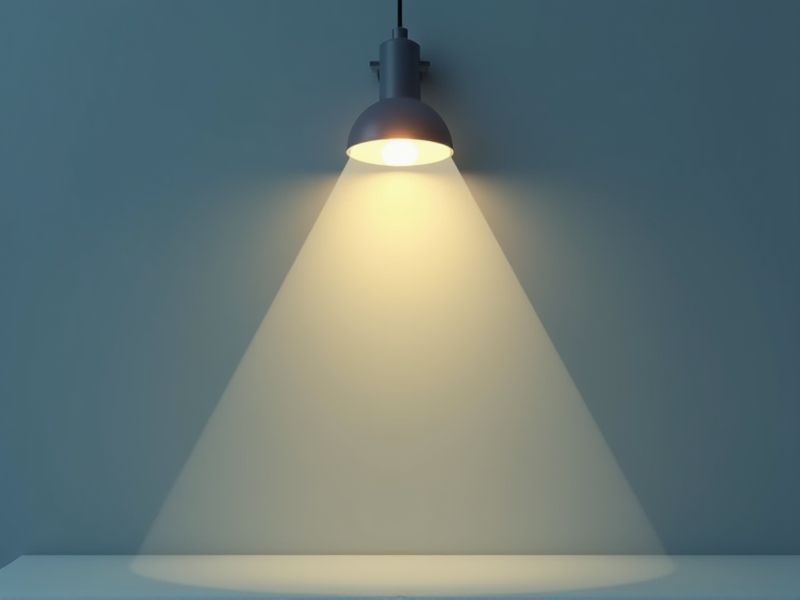
When selecting a lighting fixture, understanding standard dimensions can help ensure a proper fit and optimal functionality in your space. Common ceiling light fixtures, such as flush mounts, typically have diameters ranging from 12 to 18 inches and heights between 5 and 10 inches. For chandeliers, a popular guideline is to choose a fixture with a diameter (in inches) equal to the sum of your room's length and width (in feet), ensuring balanced proportions. Always refer to manufacturer specifications for exact dimensions, and remember to account for ceiling height and room size when making your selection.
Fixture Height
The height of the lighting fixture plays a crucial role in achieving optimal illumination and ambiance in a space. Generally, for residential areas, fixtures should be installed at a height of 7 to 8 feet from the floor to provide adequate light distribution while avoiding glare. In commercial settings, a height of 8 to 12 feet is recommended, depending on the ceiling type and the nature of the tasks performed. Proper fixture height not only enhances visibility but also improves the overall aesthetic of your environment, making it an essential consideration in lighting design.
Fixture Width
The standard width of lighting fixtures typically ranges from 6 to 48 inches, influencing both aesthetics and functionality. A narrow fixture, around 6-12 inches, is ideal for accent lighting, while wider options, exceeding 24 inches, are often utilized for larger spaces, ensuring adequate illumination. Proper fixture width enhances energy efficiency by optimizing light distribution across the area. Consider your space's dimensions when selecting a fixture to achieve the best lighting effect and visual appeal.
Fixture Depth
The depth of a lighting fixture plays a crucial role in determining both functionality and aesthetic appeal, typically ranging from 4 to 12 inches in commercial applications. A deeper fixture can enhance light distribution, reducing shadows and ensuring even illumination across large spaces. In contrast, shallower designs may be more suitable for specific tasks or confined areas, optimizing your lighting for particular needs. Studies indicate that the right depth can improve energy efficiency, with LED fixtures using up to 80% less energy compared to traditional incandescent options.
Mounting Height
Mounting height significantly impacts the effectiveness and efficiency of lighting fixtures, as it determines the distribution and intensity of light in a space. For optimal illumination, the recommended mounting height for general lighting ranges from 8 to 10 feet, while task lighting is best positioned between 30 to 36 inches above the work surface. In commercial settings, a ceiling height of 12 to 14 feet may necessitate high-intensity fixtures to maintain appropriate lighting levels. Ensuring your lighting fixtures are installed at the correct height can enhance visibility, reduce glare, and create a more comfortable environment.
Hanging Length
The standard hanging length for lighting fixtures typically ranges between 30 to 36 inches from the finished floor to the bottom of the fixture, especially in dining or kitchen areas. For ceilings higher than 8 feet, you can add an additional 3 inches for every foot of height above the standard. This ensures optimal illumination and aesthetic harmony in your space. Always consider adjusting the hanging length based on specific room dimensions and fixture design to achieve the best visual and functional results.
Bulb Size Compatibility
When selecting a lighting fixture, prioritize bulb size compatibility to ensure optimal performance and efficiency. Common bulb sizes include A19 (standard), BR30 (recessed), and GU10 (spotlight), which accommodate various applications. Many fixtures support multiple wattages, ranging from 40W to 100W, allowing customization based on your space requirements. Verify the fixture's specifications to avoid mismatches that could lead to poor illumination or increased energy costs.
Shade Diameter
The shade diameter of a lighting fixture significantly impacts both aesthetics and functionality, typically ranging from 10 to 30 inches in residential designs. A larger shade diameter often provides extensive illumination, making it ideal for open spaces, while smaller shades are preferred for focused lighting in cozy nooks. For optimal performance, consider balancing the shade size with the ceiling height, ensuring a minimum clearance of 7 feet for overhead fixtures. Your choice of shade diameter not only dictates the mood of the space but also affects energy efficiency by influencing the type and wattage of the bulb used.
Canopy Dimension
The canopy dimension of a lighting fixture is crucial for ensuring effective illumination and aesthetic coherence. Typically, canopies range from 4 to 10 inches in diameter, accommodating various ceiling types and styles. A larger canopy may be necessary for fixtures weighing over 10 pounds to provide adequate support and stability. When choosing your fixture, ensure that the canopy dimensions harmonize with your ceiling height and design to achieve optimal visual appeal and functionality.
Chain Or Rod Length
The standard length for chain or rod lighting fixtures typically ranges from 12 to 72 inches, allowing for versatile installation in various ceiling heights. For optimal performance, a fixture should hang approximately 30 to 36 inches above a dining table or kitchen island, ensuring adequate illumination without obstructing sightlines. When considering a pendant light, remember that the total drop can be adjusted by adding or subtracting links or rods to suit your space. You can improve the ambiance and functionality of your room by selecting the appropriate length based on both aesthetic preferences and practical needs.
Weight Capacity
The weight capacity of lighting fixtures is critical for ensuring safety and functionality, particularly in commercial and residential settings. Most lighting fixtures are designed to support a weight of anywhere from 10 to 50 pounds, depending on their construction materials and design. When selecting a fixture, it's essential to consider whether it complies with local building codes, which often specify maximum load limits for ceiling-mounted installations. Ensuring your lighting fixture adheres to these weight standards can prevent accidents and prolong the lifespan of both the fixture and its mounting hardware.
